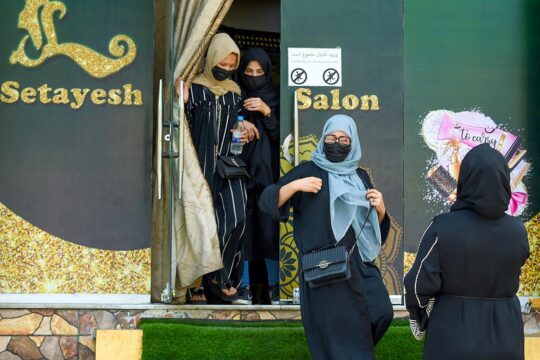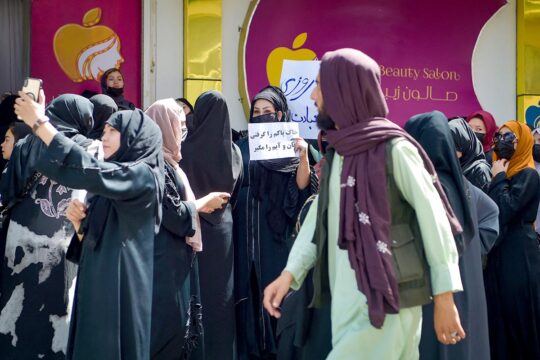Attention among observers and scholars of international criminal justice has increasingly focused on what happens before the International Criminal Court (ICC) intervenes in a situation and issues arrest warrants for perpetrators of international crimes. Prior to the ICC opening an official investigation, the Office of the Prosecutor must conduct a so-called “preliminary examination” to determine whether a full-out intervention is justified. Despite growing scrutiny, the practices encompassed within the preliminary examination stage of ICC interventions remain under-examined and under-theorized.
In this context, I drafted a paper last year, one that I hope will be published soon, entitled “Casting a Larger Shadow – Pre-Meditated Madness, the International Criminal Court, and Preliminary Examinations“. The article promotes a view of ICC preliminary examinations as a unique and strategic moment in which the Court can and should attempt to affect state behaviour, namely through the deterrence of atrocities as well as by galvanizing states to pursue justice and accountability for international crimes themselves. Of course, no single approach should be applied across all situations under preliminary examination. The focus of the piece is on particularly hard cases where major powers interests are involved – such as Afghanistan, where American forces may be the ICC’s cross-hairs.
I have posted the full draft article online. The introduction follows below. As always, please do share your views!
It has been repeatedly put forward that that the International Criminal Court (ICC) has a “shadow”. This notion has been regularly and increasingly invoked in scholarship on the ICC. In their 2012 article entitled Kenya in the Shadow of the ICC, Chandra Lekha Sriram and Stephen Brown pondered “whether the shadow of the ICC is likely to deter future atrocities.” Kevin Jon Heller has offered an analysis of the “shadow side of complementarity” — the effects of the Court “on the likelihood that defendants will receive due process in national proceedings.” Louise Chappell et al have described what they see as the institution’s “gender justice comple- mentarity shadow”, an effect they argue results from the lack of linkage between the gender jus- tice provisions under the Rome Statute and the Court’s foundational principle of complementarity. Even ICC Chief Prosecutor Fatou Bensouda has spoken of the Court’s shadow, which she describes as its “capacity to set precedents that would meet the global challenges of our times” and something that “should be considered as the most important impact of the court.”
This article is likewise concerned with the shadow cast by the ICC — but from an altogether different angle. The focus of this paper is on identifying and exploring novel strategies at the pre- liminary examination stage of ICC interventions, strategies which could enlarge the ICC’s shadow. Above all, it is argued that the Office of the Prosecutor (OTP) should consider deploying more intrepid strategies at the preliminary examination phase in order to positively influence the behaviour of the Court’s potential targets. But what is meant by the ICC’s “shadow”?
Given the diverse use of the term “shadow” in international criminal law and justice scholarship, it is worthwhile briefly outlining what this paper means by it. “Shadow” here is taken to entail the indirect impression and impact that the ICC has on various actors and, in particular, on those whose behaviour the Court seeks to affect through its actions and decisions. These effects and impressions can exist at any time and at any stage of the Court’s interventions — including prior to the opening of an official investigation.
There are two related reasons which likely explain the growing interest in the ICC’s shadow rather than a myopic focus on its direct effects. First, the limits of the Court’s effects on key issues such as deterring mass atrocities, successfully concluding cases, and ending impunity, are increasingly evident. The ICC’s “bite” has not been as threatening or effective as some had originally hoped and others had feared. Instead, concern seems to be focused on whether the Court bit off more than it could chew and thus created an expectations gap in what justice and accountability the institution can deliver. Second, there has been something of a ‘complementarity turn’ in the field of international criminal justice, with scholars and practitioners focus- ing on how the ICC can galvanize and stimulate domestic and regional accountability processes as a primary motivation of the Court’s mandate. As a result, there is a palpable focus on how to increase the shadow of the ICC.
Of course, and as we know from famous childhood stories such as Peter Pan, while shadows are real yet can neither be caught nor physically grasped. They are impressions of light upon surfaces. Importantly, the size and shape of a shadow changes with the angle of the light upon the object casting it. If one were to take a flashlight and point it at a toy house from a small angle above, the house’s shado
w will appear diminutive. Increase the angle, and the edifice’s impression upon the floor becomes elongated and increasingly striking. At the core of this paper is an assertion that the ICC’s strategies are the light that determines how long and striking the Court’s shadow is and can be. Changing the focus of those strategies can have an impact on how effective the Court is at casting its shadow and, ultimately, in achieving desired outcomes.
(i) Paper Overview
The article proceeds as follows. The first section of the paper outlines the orthodox view of preliminary examinations which sees this stage of an ICC intervention as a ‘legal checklist’. It is posited that this classical understanding has neglected to view the preliminary examination phase as a unique stage during which the Office of the Prosecutor (OTP) can deploy strategies to affect and influence actors in the contexts under examination — namely to induce domestic judicial activit
y and to deter and prevent mass atrocities. In the second section, the paper ex- plores four key assumptions that should constitute the foundation for thinking through how to deploy preliminary examinations effectively: i) that the ICC is predisposed to intervening in on- going and active conflicts; ii) that the Court is a political, as well as legal, institution; iii) that, generally, the ICC’s preference is to have domestic authorities — and not the Court — prosecute international crimes; and iv) that the strategic imperatives and incentives of warring actors and potential targets of ICC interventions are unique at the preliminary examination stage. Together, these assumptions should inform how the OTP deploys preliminary examination strate- gies as a means to expand the shadow of the Court.
In the subsequent and third section, the paper draws on recent historical revelations pertaining to strategies developed by Richard Nixon and Henry Kissinger as an analogy for one particular strategy that should be considered in the OTP’s preliminary examination ‘toolbox’: the “madman theory” of preliminary examinations, wherein the OTP deploys a brazen communication strategy in order to give the impression that all actors alleged to have committed mass atrocities may be targeted for indictment. It is argued that the “madman theory” should be employed in the most politically sensitive and precarious contexts. It is further demonstrated that the embers of such a policy can already be seen in how the OTP’s preliminary examination reports since 2014 covered allegations of torture perpetrated by U.S. forces and the CIA in Afghanistan.
How the ICC can leverage preliminary examinations to affect state behaviour is discussed in the penultimate section of the paper. Section four subsequently outlines and discusses relevant weaknesses and drawbacks to the madman approach to preliminary examinations. The article concludes by arguing for the need to think creatively about how the preliminary examination stage can be strategically deployed in order to have intended and desired effects on the behaviour of warring parties and the pursuit of accountability. Doing so might not only increase the likelihood of the Court incurring positive outcomes but also bolster the independence and legitimacy of the institution.
This article was first published by Justice in Conflict





